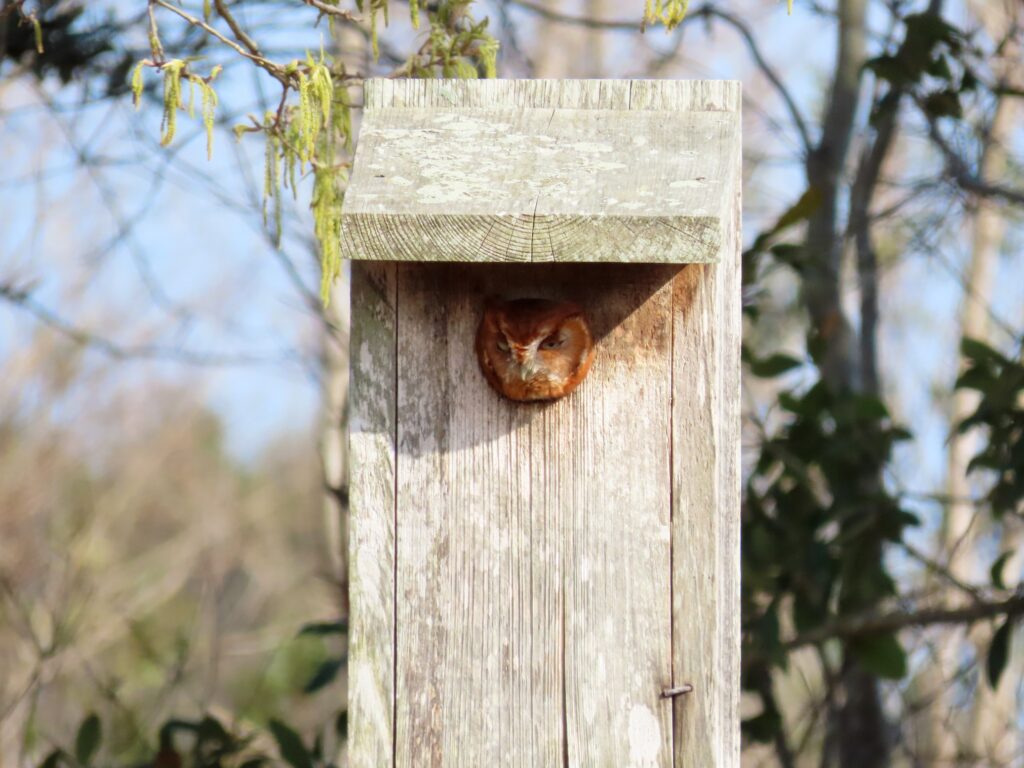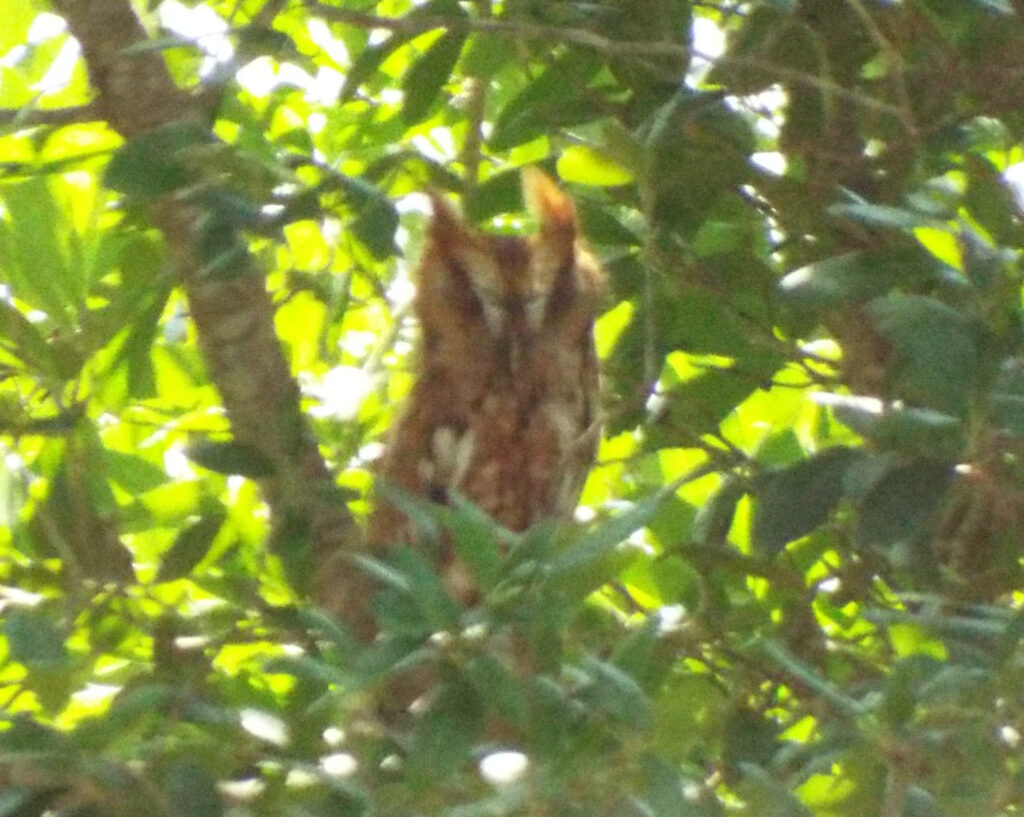




This week for Flora and Fauna Friday we’re listening in to the haunting call of a diminutive raptor, the Eastern Screech Owl (Megascops asio).
Whilst walking within woods in waning twilight, a whistling wraith-like whinny wrings a shiver up your spine and haunting pulsing laughter incites paranoia amidst the dark. The song of the Eastern Screech Owl creates an indelible memory in the minds of all who first hear it and strikes a chord of fear and fury in the hearts of many of our native songbirds. The Eastern Screech Owl is found year-round throughout the eastern and central United States. They inhabit woodlands and small groves of mature trees in open regions. Our Screech Owl is downright tiny for an owl. In fact, they’re practically songbird-sized and about the same heft as a Mourning Dove. They have all the trappings you’d expect of an owl, large eyes, broad face, hooked bill, upright posture, and talons, but condensed down into the size of just your outstretched hand! Eastern Screech Owls come in three primary color morphs: red, gray, and brown. Yet, all three flavors of our Owl share similar characteristics, to include pale-brass colored eyes, an ivory bill, a dark ring framing the lower face, darker vertical stripes down the belly, and prominent “horns” that they can lift up from their “eyebrows”. These features together lend themselves to giving Screech Owls some incredibly human-like expressions, which our brains can’t just can’t help but see! The Eastern Screech Owl has several distinct and unmistakable calls, each more haunting that the last. Their primary song is a bone-chilling, high-pitched, horse-like whinny. Their alternative song is a pulsating, monotonous, windy trill, like the echo of disembodied laughter. Lastly, their calls are a chaotic utterance of resonating puppy-like whines. Each will certainly leave an impression the first time you hear it!
Eastern Screech Owls, like all our other owls, are nocturnal predators. They hunt in the dead of night using their fantastically sensitive hearing and eyesight, swooping in to ambush unsuspecting prey on silent wings. Their diet consists largely of insects but also includes lizards, treefrogs, small mammals, small birds, and practically anything else they want to catch. Songbirds are particularly sensitive to the presence of Screech Owls and will mob and pester them in daylight hours if they catch wind of an Owl in the neighborhood. Screech Owls hunt both in open habitats and woodlands but are dependent on mature woodlands for nesting. Screech Owls are cavity nesters and depend on old nest holes carved in trees by our larger woodpecker species. The loss of mature tree snags suitable for nesting has caused Screech Owls to become scarce on the landscape. However, Screech Owls are a resilient species and have adapted to new opportunities in the modern world. They’re most common in mature hardwood forests but they’re not above moving into suitable woodlots amidst farmlands and suburban areas. Here in the Lowcountry, Screech Owls have also taken to commandeering Wood Duck boxes for nesting. So even if you don’t have any wetlands, you may want to consider putting up a duck box, but for owls!